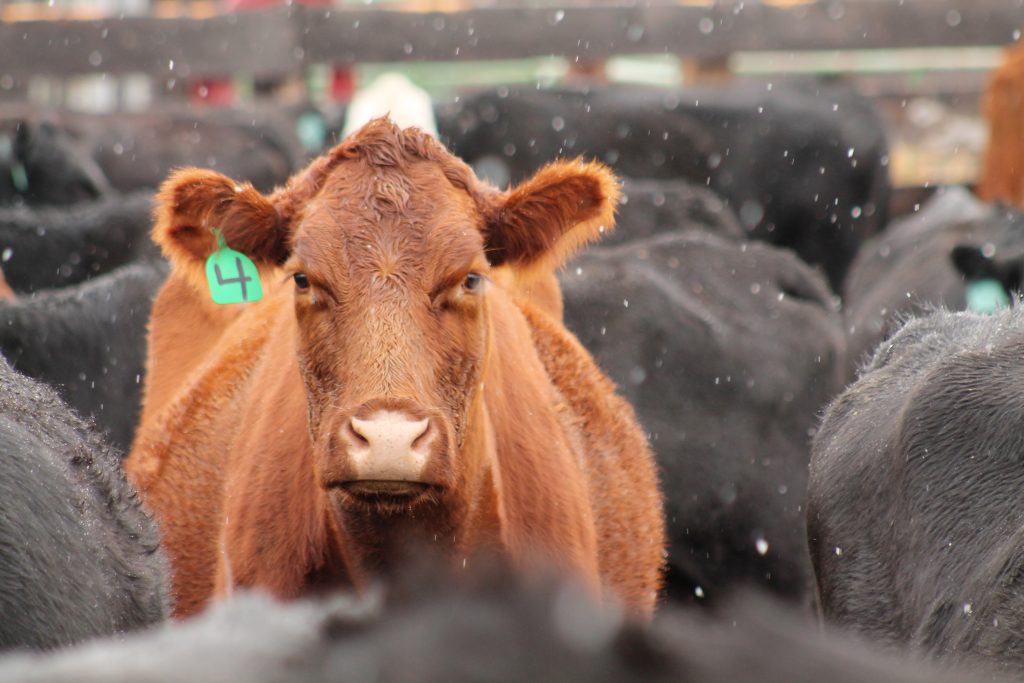Making Big Decisions: Drought conditions force producers to make tough herd decisions during fall preg-check

For centuries, agriculture producers have faced challenges which constantly test their resilience. Today, this list of challenges is long, and with ongoing drought conditions, record-high input costs and unnecessary government policies around every corner, maintaining a herd of cattle may arguably be more challenging than ever.
According to the National Drought Mitigation Center’s (NDMC) September Drought Climate Summary, from Aug. 29 to Sept. 26, the West experienced a slight decrease in overall abnormal dryness, from 45.5 to 44 percent, but an intensification of all other categories. moderate drought or worse increased from 30.8 to 31.2 percent, severe drought or worse increased from 13.3 to 17.7 percent, extreme drought or worse increased from 2.9 to 6.1 percent and exceptional drought increased from zero to 0.7 percent.
There is no doubt when water becomes scarce, so does feed supply and the cost of maintaining a cow herd. Therefore, during drought conditions and tough years, producers may be forced to reduce their herd size to make ends meet.
“In such situations, making well-informed decisions is critical for the economic viability of an operation,” explains the Beef Cattle Research Council (BCRC) in an Oct. 5 article titled “Preg-Checking in a Drought Year with High Cull Cow Prices.”
“By preg-checking and identifying open cows, producers can choose to cull open cows early, reduce the herd’s overall feed requirements and minimize additional costs associated with keeping open animals,” the council continues.
Selling open cows
For the most part, pregnancy checking has become commonpractice among U.S. cattle producers, since many believe the benefits of identifying pregnant animals far outweigh the costs. One of the greatest benefits of preg-checking is identifying open females early, which allows producers to save on input costs.
Once identified, producers can make several decisions regarding their open females, and since every mouth to feed during a drought year really counts, one option is to sell open cows.
“Producers may consider calculating the cost of gain and determining if open cows should be sold right away or if feeding them until high prices return in the spring would be profitable,” states Taylor Grussing, a former South Dakota State University (SDSU) Extension cow/calf field specialist, in a SDSU article, updated Oct. 26, 2021.
In order to help producers calculate the value of pregnancy detection, including the value versus cost of selling cull cows right away or holding on to them until spring, BCRC created the Economics of Pregnancy Testing Calculator, which allows producers to work through their own scenarios.
Two variations of the model are available to producers at beefresearch.ca/tools/pregnancy-detection/.
“The higher the winter feed costs, the more favorable it becomes to preg-check and cull cows in the fall, particularly for producers facing feed shortages and larger purchased feed expenses,” states BCRC.
Separating the herd
A second option for producers is to hold on to their open cows, but feed them separate from the rest of the herd through winter months.
Since open cows have lower nutrient requirements than pregnant cows, Grussing notes producers may consider saving on feed costs by removing open cows from quality pasture or from groups receiving high-quality hay and placing them on a more cost-effective resource such as corn stalks, low-quality hay, corn, etc.
Conversely, BCRC says producers may want to place open cows on a quality, high-energy ration to help them gain more weight.
“With record-high cull cow prices, the increased value for cull cows during the feeding period could make overwintering a financially attractive option, as every additional pound is worth more,” the council explains.
Other benefits
of preg-checking
In addition to identifying open cows and allowing producers to make cost-effective decisions, there are other ways preg-checking may impact a producer’s bottom line, especially during a tough year.
“Producers can use preg-check to determine the percentage of females bred in the first 21 days of the season and plan their pre-calving vaccinations, labor and facilities for times of peak calving activity,” shares Grussing. “Additionally, producers may consider alternate management for late-bred cows that do not fall within their yearly calving interval and may be more difficult to breed back next year.”
To conclude, Grussing notes producers can also utilize their pregnancy results to strategically market their cows, calves and/or yearlings to get the best bang for their buck.
Hannah Bugas is the managing editor of the Wyoming Livestock Roundup. Send comments on this article to roundup@wylr.net.





